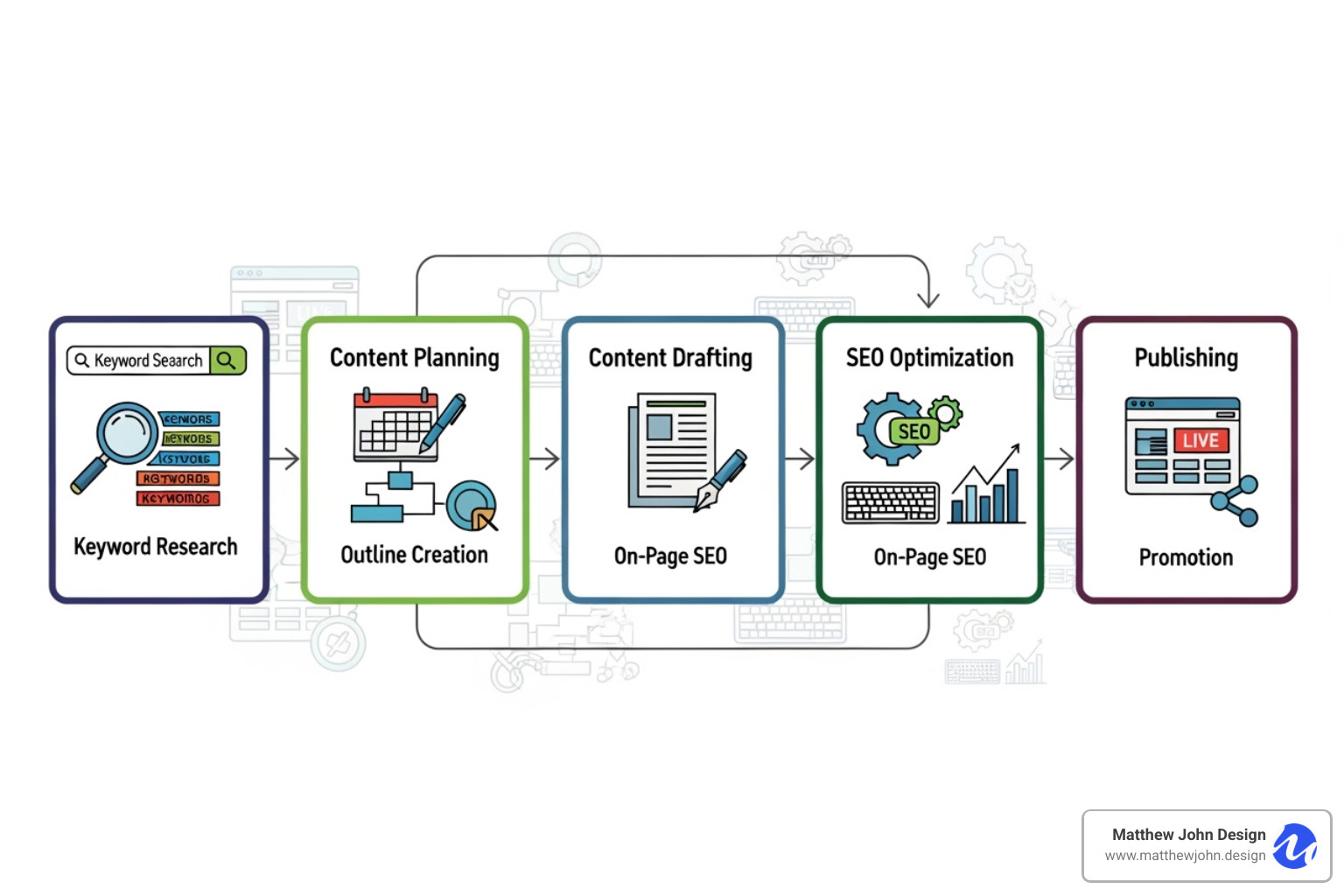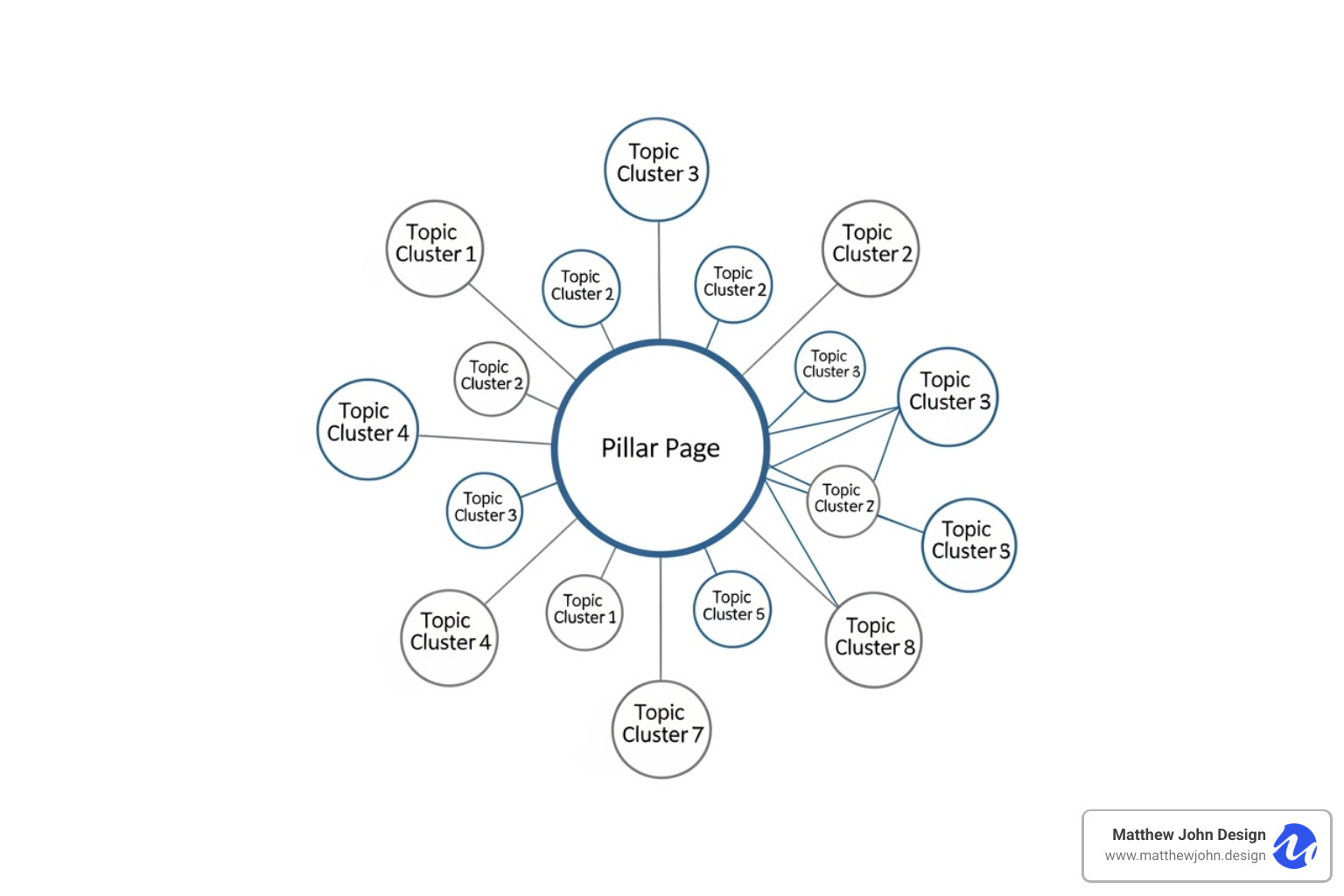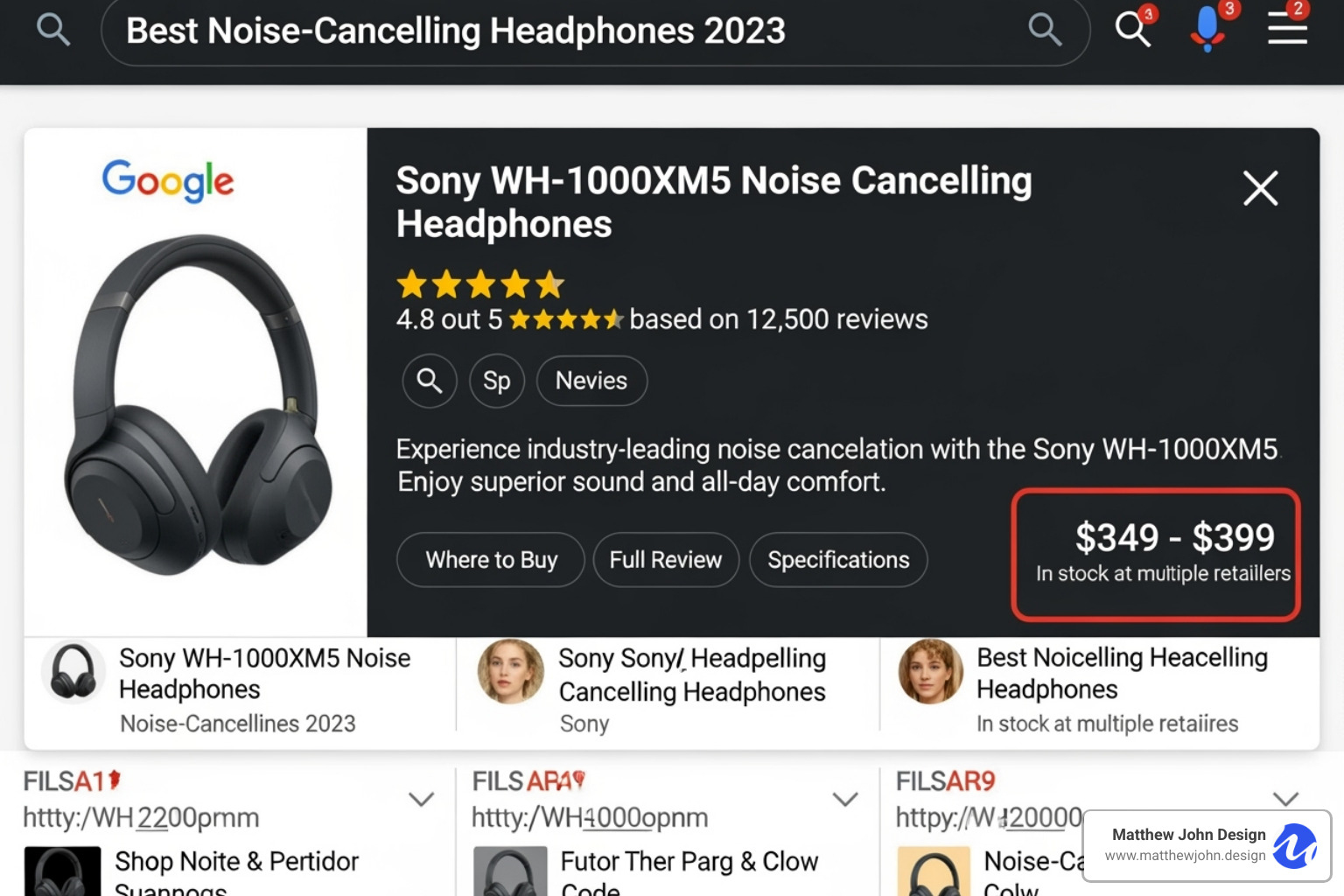Any information contained on this Website is not legal advice and should not be treated as such. You should always contact an attorney for help with your specific legal needs and issues. We may also earn a commission when you click links to our partners and purchase goods or services. For more information, read our Disclaimers Policy.
Why writing SEO content for website content marketing matters in 2025
How to write SEO content for website content marketing starts with understanding that today's search landscape has fundamentally changed. It's no longer about stuffing keywords into mediocre text—it's about creating genuinely helpful content that satisfies both search engines and the humans behind every query.
Quick answer: To write effective SEO content:
- Research keywords that match user intent.
- Analyze SERPs to understand what content format Google rewards.
- Create comprehensive content with original insights.
- Optimize on-page elements: titles, meta descriptions, headers, and URLs.
- Use keywords naturally in the intro, headings, and conclusion.
- Structure for readability with short paragraphs and bullet points.
- Add internal and external links to relevant, authoritative sources.
- Optimize media with compression, alt text, and video transcripts.
- Implement structured data (schema markup) for rich snippets.
- Measure and update content based on performance data.
The reality is stark: 96.55% of web pages get zero organic traffic from Google. Without optimized content, your site is invisible. Get it right, and you capture a share of the clicks that go to the top search positions, earning value long after paid ads stop.
The game has evolved beyond simple keyword placement. Search engines now evaluate E-E-A-T (Experience, Expertise, Authoritativeness, Trustworthiness), understand semantic relationships, and prioritize content that helps users accomplish their tasks—what Google calls "Searcher Task Accomplishment."

How to write SEO content for website content marketing (2025 playbook)
With AI-powered features like Search Generative Experience (SGE), Google's algorithm now prioritizes content that demonstrates real-world Experience, Expertise, Authoritativeness, and Trustworthiness (E-E-A-T). This shift means your content must prove you know what you're talking about, not just that you can string keywords together.
At Matthew John Design, we build scalable Webflow sites with CMS structures that empower marketing teams. A solid technical foundation (mobile-first, fast Core Web Vitals, clean URLs) is crucial, but it only works when paired with genuinely valuable content that helps users accomplish their tasks—a core ranking signal Google calls Searcher Task Accomplishment (STA).

Step-by-step: how to write SEO content for website content marketing
This systematic approach ensures every piece you publish has the best chance of ranking.
- Keyword Research: Find terms your audience actually uses, not just industry jargon.
- Analyze Search Intent: Check the SERPs to see what format (blog, guide, product page) Google rewards for a given keyword.
- Build a Topical Map: Organize keywords into clusters to build authority around broader themes.
- Create a Content Brief: Outline the target audience, keywords, and user task to guide the writing process.
- Outline with Headers: Use H1-H3 headings to structure content for readers and search engines.
- Draft Audience-First Content: Write clearly, answer questions thoroughly, and share genuine insights.
- Optimize On-Page Elements: Place keywords naturally, add internal/external links, and write image alt text.
- Publish: Ensure your site is technically sound, fast-loading, and mobile-friendly.
- Measure Performance: Use analytics to track traffic, rankings, and conversions.
- Update and Refresh: Regularly update content to keep it fresh and competitive.
For deeper insights, explore our guides on SEO Friendly Content Creation and What is SEO Content Creation.
Find keywords people actually use: intent, topical maps, and LSI/semantics
Keywords are about understanding the language your audience uses. Use tools like Google Keyword Planner or Ahrefs to expand broad "seed" keywords into specific "long-tail" phrases, which often have higher conversion intent. Also, mine Google's "People Also Ask" and "Related searches" for free insights into user queries.
Match your content format to the four main types of search intent:
- Informational: "what is SEO content?" (needs educational articles)
- Navigational: "Matthew John Design website" (needs clear site pages)
- Commercial: "best SEO content tools" (needs comparison guides)
- Transactional: "hire SEO content writer" (needs service pages with CTAs)
Modern SEO also requires understanding semantic relationships (LSI keywords). Cover a topic comprehensively by naturally including related concepts. Build topical authority with comprehensive pillar pages for broad topics and detailed cluster content for specific subtopics, linking them together to signal expertise. Since users typically read only 20–28% of your content, make every word count with clear, scannable formatting.
Explore content strategy further in our guide on Content Marketing for SEO: Ideas, Creation Steps.

Structure and on-page essentials: titles, meta, headers, URLs, links
Structure your content for both humans and search engines with these on-page essentials.
- Title Links & Meta Descriptions: Your title (50-60 characters) and meta description (under 155 characters) are your SERP advertisement. Make them compelling and include your primary keyword near the start.
- Headers (H1–H3): Create a scannable hierarchy. Use one H1 per page with your primary keyword, and use H2s/H3s for major sections and subtopics.
- URLs: Use short, descriptive URLs containing your keyword.
/how-to-write-seo-contentis far better than/page?id=12345. - Keyword Placement: Place your primary keyword naturally in your introduction, a few subheadings, and your conclusion. Avoid keyword stuffing, which violates Google's spam policies.
- Internal & External Linking: Link to related content on your site (internal links) to build topical authority. Link to credible, relevant sources (external links) to add authority.
- Anchor Text: Use descriptive anchor text (e.g., "learn more about keyword research") instead of "click here."
For more detailed guidance, check out our article on How to Incorporate SEO Principles into Content Creation.
Media, accessibility, and speed: images, video, alt text, transcripts, schema
Media and technical performance are critical for engagement and ranking.
- Image Optimization: Compress images (under 100 KB) and use modern formats like WebP to improve page speed.
- Alt Text: Write descriptive alt text for all images. This is crucial for accessibility (WCAG 2.2) and helps search engines understand image content.
- Video Content: Always provide full transcripts for videos to aid accessibility and give search engines text to crawl.
- Video Hosting: Webflow only supports background videos up to 30 MB and doesn't provide native hosting for larger video files. For optimal performance and SEO, use third-party hosting like YouTube, Vimeo, or Vidzflow.
- Structured Data (Schema): Add schema markup to your code to help search engines understand your content. This can enable rich snippets (like FAQs or review stars in the SERP), which can increase click-through rates.
- Core Web Vitals: These Google ranking factors measure page experience (Loading, Interactivity, Visual Stability). Improve them by optimizing images, code, and server response times.
For more optimization guidance, explore our Webflow SEO Settings: Best Practices guide and Google's own Search Engine Optimization (SEO) Starter Guide.

Build, update, and promote: SERP analysis, E-E-A-T, snippets, and content plan
Great content is just the start. The ongoing cycle of building, updating, and promoting is what truly wins the web.

Tools, templates, and measurement: how to write SEO content for website content marketing faster
Use tools and strategic planning to streamline your process and measure success.
- AI Tools: Use tools like ChatGPT to assist with brainstorming and drafting, but always add unique human expertise, insights, and E-E-A-T. See our guides on AI Tools for SEO Content Creation and AI-Driven SEO Content Creation.
- SEO Checkers: Use tools like Semrush's Writing Assistant or Yoast SEO for real-time feedback on on-page factors.
- Measurement Tools:
- Google Search Console: Your direct line to Google for performance data, indexing status, and errors.
- Google Analytics: Provides insights into user behavior like traffic sources and time on page.
- Rank Tracking Software: Tools like Ahrefs or Semrush monitor keyword rankings and competitor performance.
- Conversion Tracking: Track actions (form fills, downloads) tied to content to understand ROI. More than half of all clicks come from the top three SERP positions, according to scientific research on CTR.
- Editorial Calendar: Plan and schedule content production for consistency and strategic alignment.
For a comprehensive look at tools, explore our SEO Content Creation Tool guide.
Analyze, update, and promote: SERPs, E-E-A-T, snippets, myths to avoid
SEO content is a continuous journey of analysis, updates, and promotion.
- SERP & Competitor Analysis: Regularly analyze top-ranking content to find gaps and understand what Google rewards for specific queries.
- Content Updates & Pruning: Implement a regular refresh cadence to update older articles. Prune underperforming content by merging, updating, or redirecting it.
- Internal Link Updates: As you publish new articles, add links to them from relevant older posts to strengthen your topical clusters.
- Promotion Mix: Promote content through outreach for backlinks, social media amplification, and email marketing. The best promotion is creating exceptional content that people naturally share.
- Influencing Snippets: While Google has the final say, you can earn featured snippets by structuring content to directly and concisely answer common questions. See Google's guidance on featured snippets.
Common SEO Myths to Avoid:
- Meta Keywords: Google hasn't used this tag for ranking in years.
- Keyword Stuffing: This is a spam policy violation and hurts readability.
- Magical Word Count: Focus on comprehensive quality that satisfies user intent, not an arbitrary word count. A top-ranking page might average 1,447 words, but it's the quality that matters.
- Ignoring E-E-A-T: Demonstrating Experience, Expertise, Authoritativeness, and Trustworthiness is non-negotiable. Learn more about How Semantic SEO Impacts the Content Creation Process.
At Matthew John Design, our SEO Content & Links services focus on creating valuable content that drives organic traffic. Our expertise in scalable Webflow sites empowers marketing teams to launch pages and run campaigns without developer delays.
Ready to lift your online presence? Explore our services:
- Our SEO & Content Services: SEO Content & Links
- Find Our Web Design Solutions: Web Design and Build
- Effortless Website Management: Website Management
- Ensure Legal Compliance with Ease: Our website policy templates provide a convenient method to create essential legal documents. Website Policies
- View All Our Services: Our Services
- Explore Our Webflow Templates: Templates
- See Our Portfolio:
- Transparent Pricing: Pricing
We also partner with leading tools to improve your digital ecosystem:
- For advanced website security and policy generation: Termageddon
- For powerful video hosting and optimization: Vidzflow
- For seamless e-commerce solutions: Shopify
Let's build something amazing together!

.jpg)